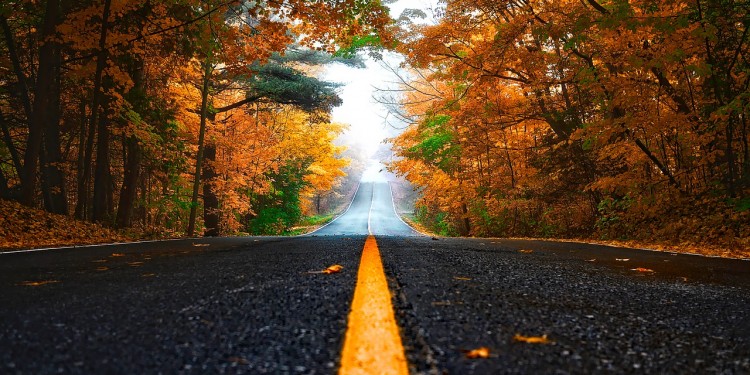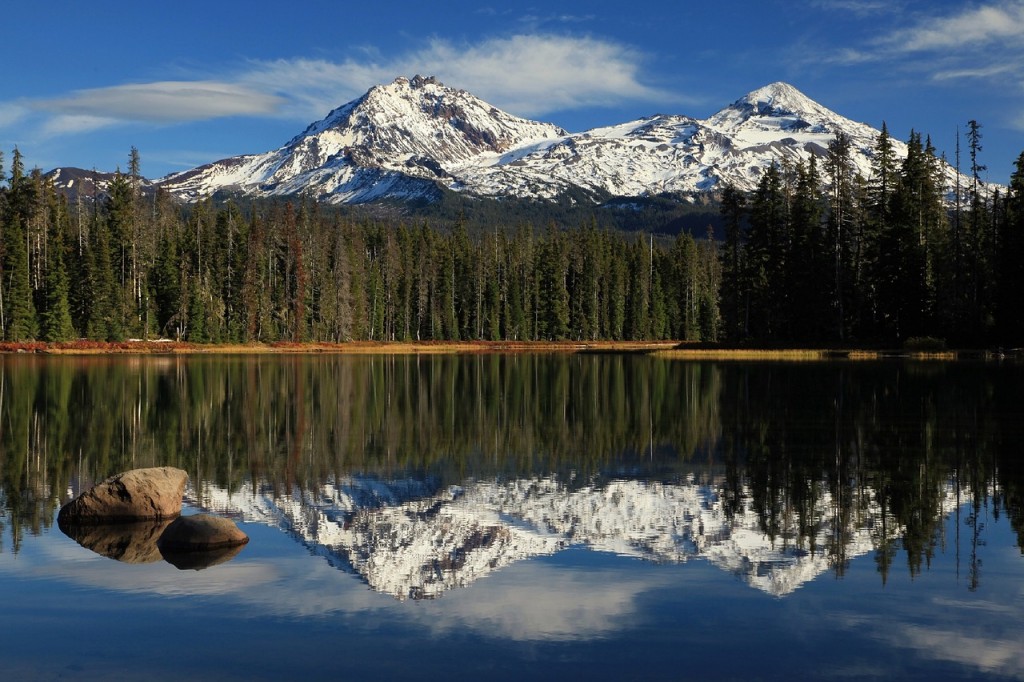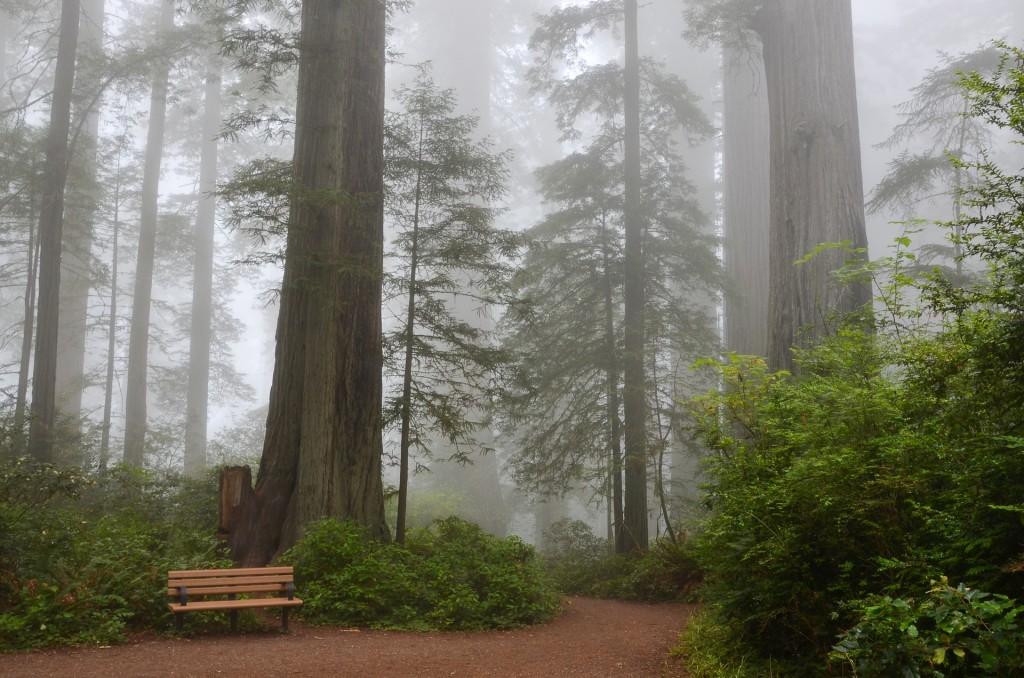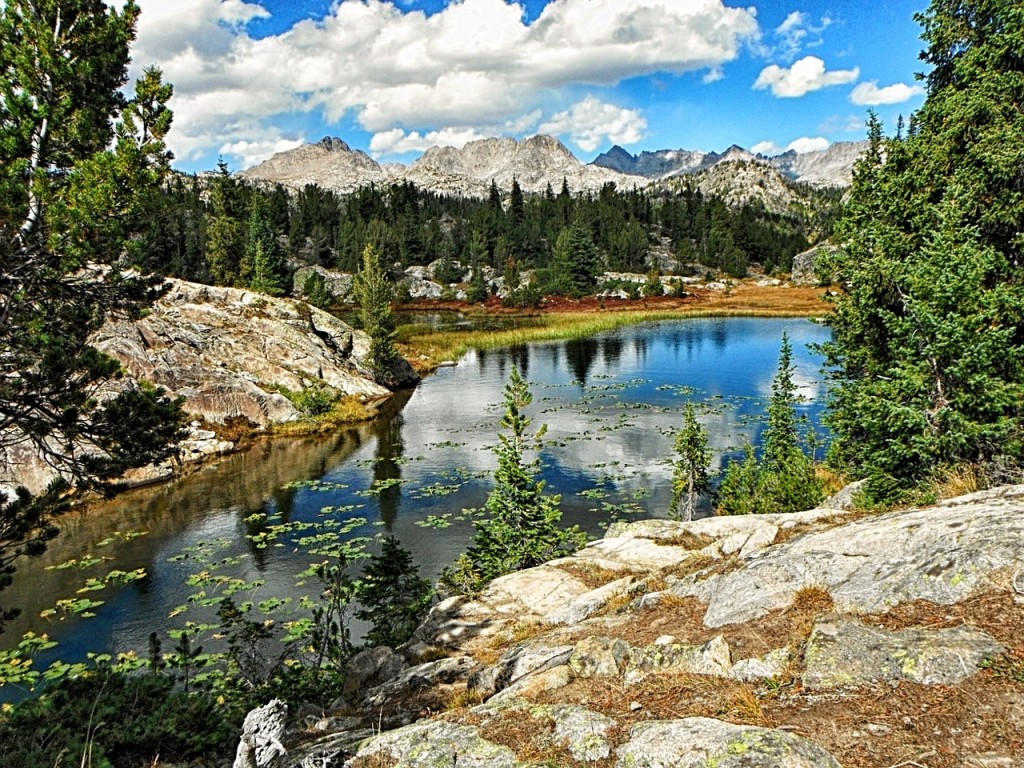
The U.S. National Forest system began in 1891 with the designation of Yellowstone Park. Today’s National Forests are managed by the Forest Service and offer abundant recreational opportunity to all U.S. citizens and visitors to the country.
1. Willamette National Forest
Featuring abundant old growth, high mountain lakes, wild rivers, and wildlife, the Willamette National Forest in Western Oregon features more than 70 developed campgrounds. Those who prefer a more rustic experience are welcome to camp in other parts of the forest that have been designated for dispersed camping. Insect protection is essential for midsummer sojourns to this forest.

Snow-peaked mountains reflect into the pristine, still waters of Scott Lake deep within the Willamette National Forest.
2. Green Mountain National Forest
Although most remaining forests are located in the coastal regions of the American West, Green Mountain National Forest is situated in Vermont. Over 70-million people live within a day’s drive of Green Mountain National Forest, making it more easily accessible to a greater number of people than most public lands.
3. Sequoia National Forest
The biggest trees on Earth are found in the groves of the Sequoia National Forest. Visitors come from all over the world to see these giant trees, some of which are as much as 275 feet tall and 100 feet wide at the trunk base. Canyons, wild rivers, grasslands, and coastal areas are all found within its borders. The Giant Forest Museum is an excellent place to learn about the unique ecosystem of this part of the planet. Bring sturdy shoes and prepare to dress in layers when planning a visit to this forest.

Fog shrouded sequoias offer a peaceful place for visitors to rest in California’s Sequoia National Forest.
4. Tongass National Forest
At more than 17 million acres, the Tongass National Forest is the largest National Forest in the U.S. Enormous tracts of temperate rain forests still exist in this area despite major logging operations. It can be a magnificent place to vacation, but visitors need to be prepared with plenty of warm clothing, food, water, and a well-equipped first aid kit because services in this remote part of Alaska are far and few between.
5. Bighorn National Forest
The diverse landscape of the Bighorn National Forest offers visitors clear mountain lakes, wildflower-strewn mountain meadows, rugged mountain terrain, verdant valleys, and gently rolling hills. The Northern Wyoming region is also renowned for world-class fly fishing. Over 30 designated campgrounds are available for public use in the Bighorns. Weather is unpredictable, so warm clothing is a must even during summer.

Wyoming’s Bighorn National Forest is a favorite spot for fly fishing.
6. The Delta National Forest
One of the smaller National Forests at just 60,000 acres, Delta National Forest is also one of the most unusual because of the rare forested wetlands it features. Visitors should bring plenty of insect protection because bugs thrive here. Although the Delta National Forest has no developed campgrounds, it offers 80 rustic campsites.
With 154 National Forests in the U.S., outdoor enthusiasts of all types are sure to find their ideal wilderness experience. If you’re like most people, you’ll want to visit as many as possible.
